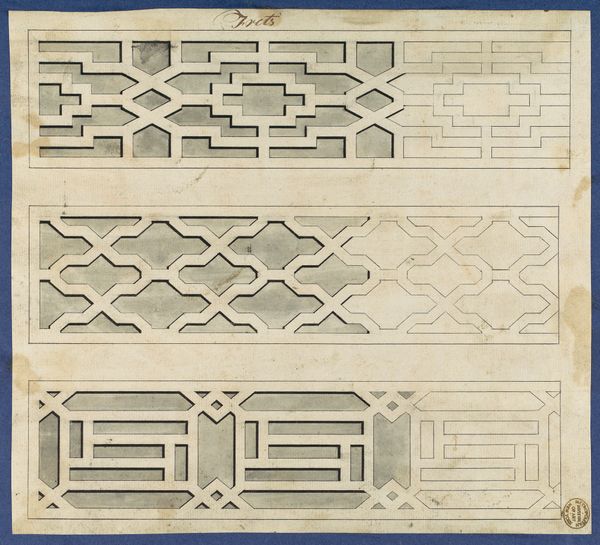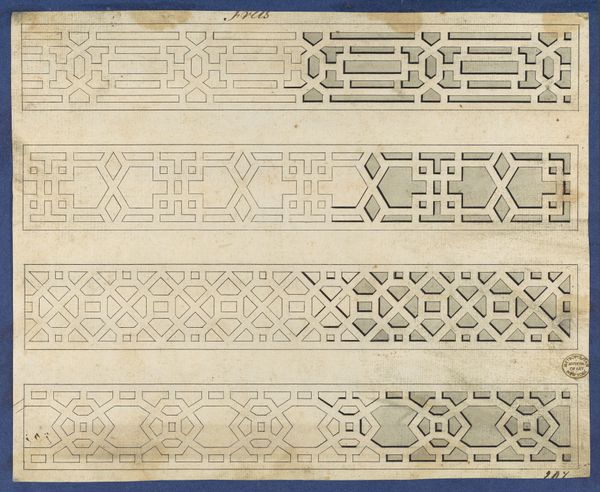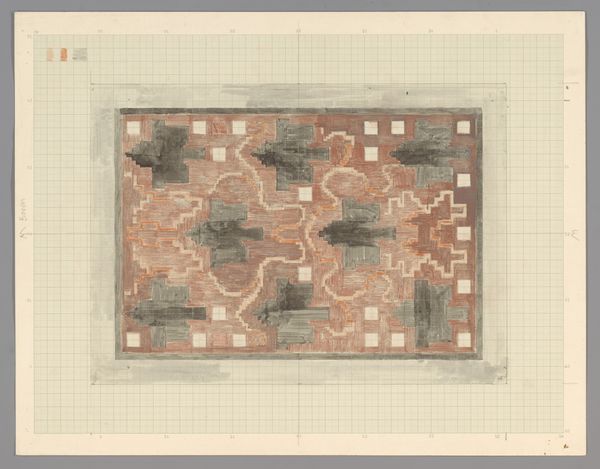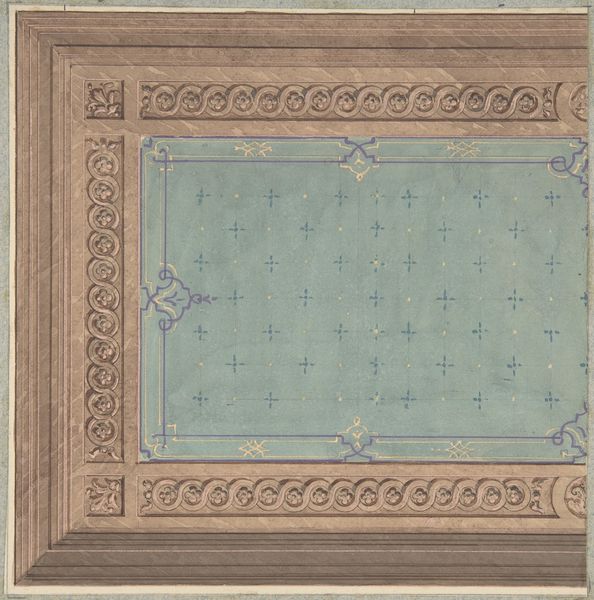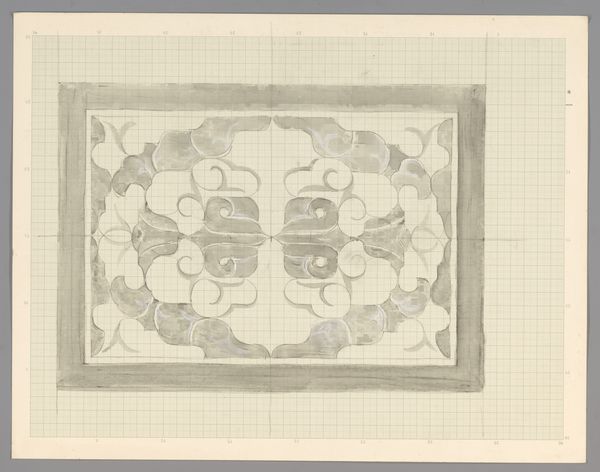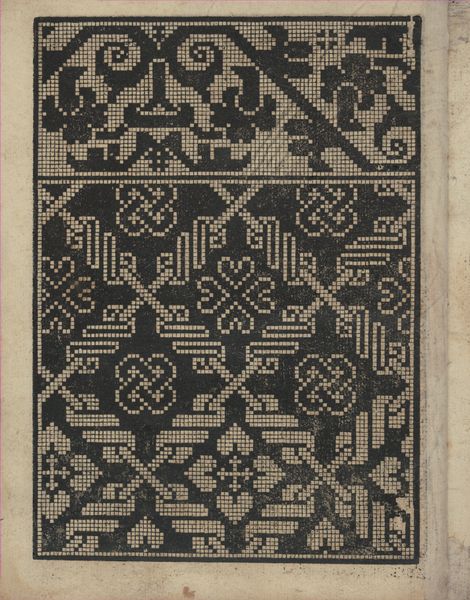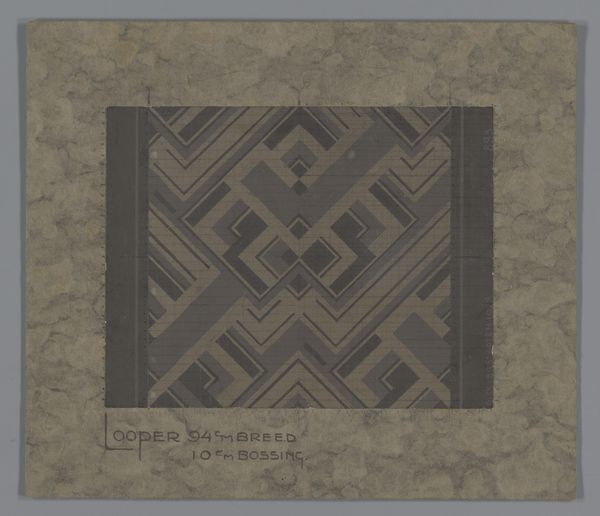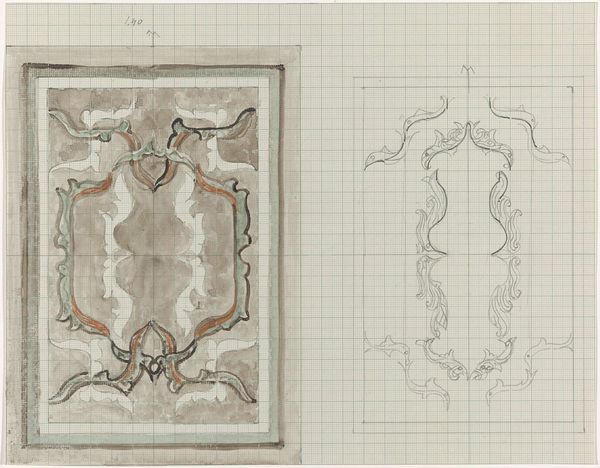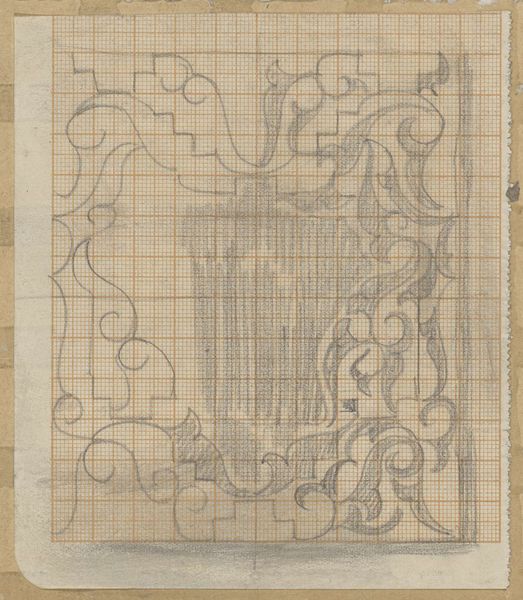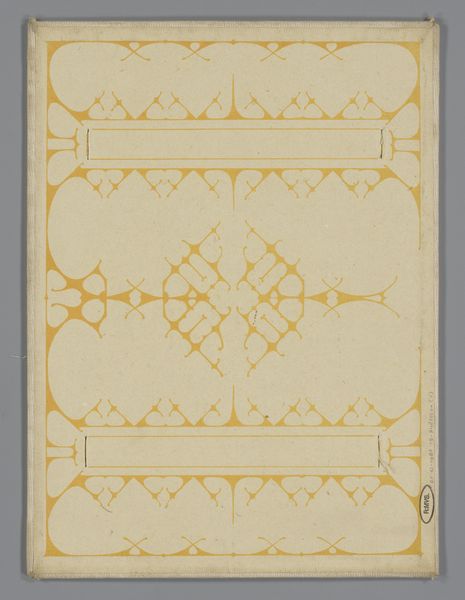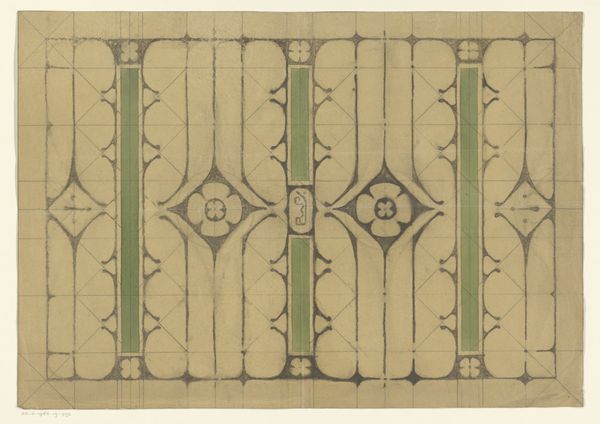
drawing
#
drawing
#
geometric pattern
#
subtle pattern
#
repetitive shape and pattern
#
geometric
#
geometric-abstraction
#
repetition of pattern
#
vertical pattern
#
line
Dimensions: sheet: 8 5/8 x 9 1/2 in. (21.8 x 24.1 cm)
Copyright: Public Domain
Editor: So, this is "Frets, from Chippendale Drawings, Vol. II" created in 1754 by Thomas Chippendale. It’s a drawing, a print, featuring these very precise, almost austere geometric patterns. What strikes me is how different it feels from what I typically associate with Baroque. How do you read this piece? Curator: It’s tempting to see Chippendale’s designs purely as aesthetic objects, but it's essential to consider the socio-economic forces at play. These patterns were intended for furniture, objects meant to furnish elite homes, reinforcing social hierarchies through their very presence. What do you think the impact of these repeated geometric motifs would be in that setting? Editor: I see what you mean; the patterns become visual indicators of status and refinement, separating those who can afford this kind of design from those who cannot. It’s not just decoration; it’s a statement. Curator: Exactly! The Baroque embraced opulence and grandeur as expressions of power, which were visually consumed to be the trend. But Chippendale also subtly adapts earlier designs within the reach of Britain’s expanding merchant class. Does that suggest a shift in the perception of art's public role? Editor: Perhaps, instead of solely projecting authority like in earlier Baroque, this also hints at aspiration. By adapting existing designs, it enables a broader audience to participate in a kind of visual dialogue, even if from a slightly lower tier. Curator: Precisely. The "Arts and Crafts" movement emerges later partially as a reaction to mass-produced goods devoid of aesthetic merit. What relationship could we draw here between these carefully designed frets, social standing, and access? Editor: I hadn't considered that. This gives me a better understanding that art is not only about aesthetics but it has social meanings as well. It all is related to culture. Thanks for helping to explore this. Curator: And thank you for recognizing how these seemingly simple patterns reflect the public role of art during the 18th century. These drawings demonstrate the intersection between art, commerce, and society.
Comments
No comments
Be the first to comment and join the conversation on the ultimate creative platform.
